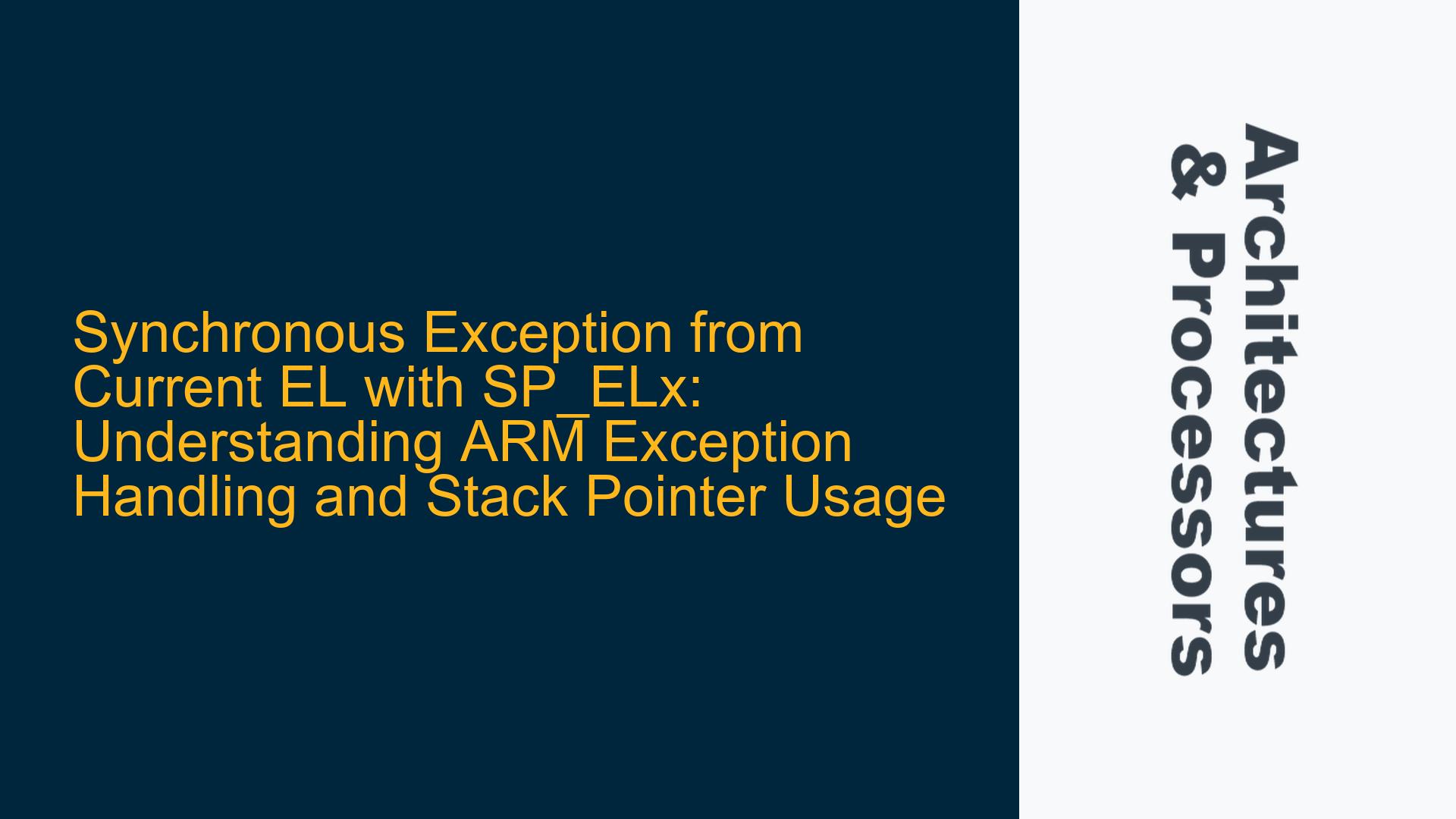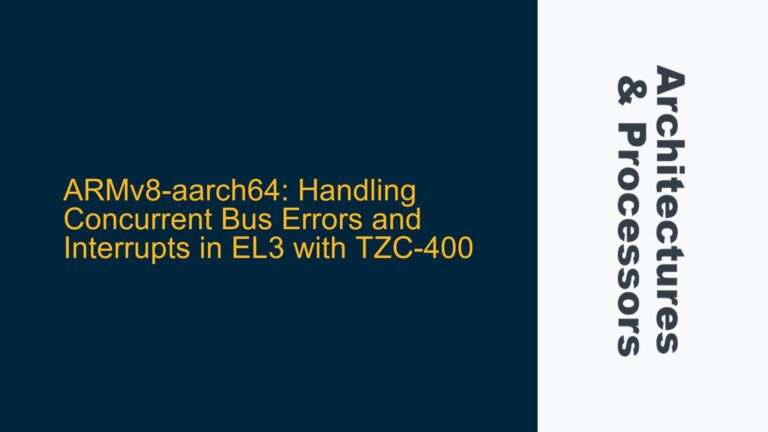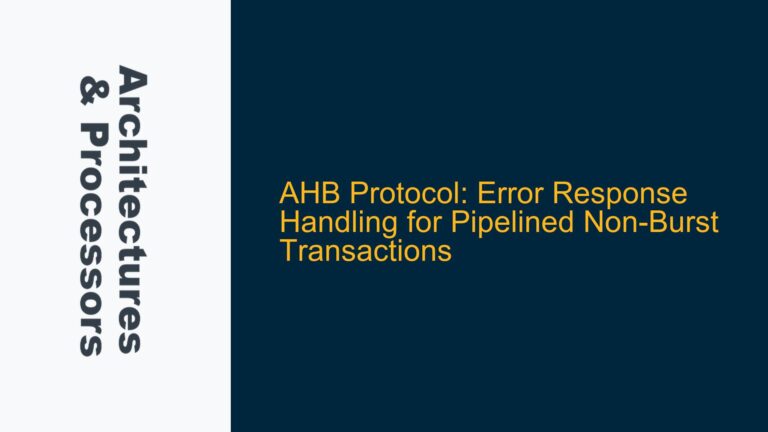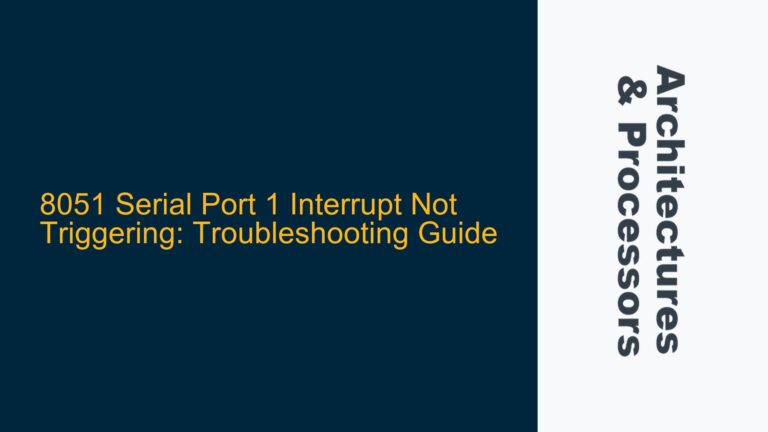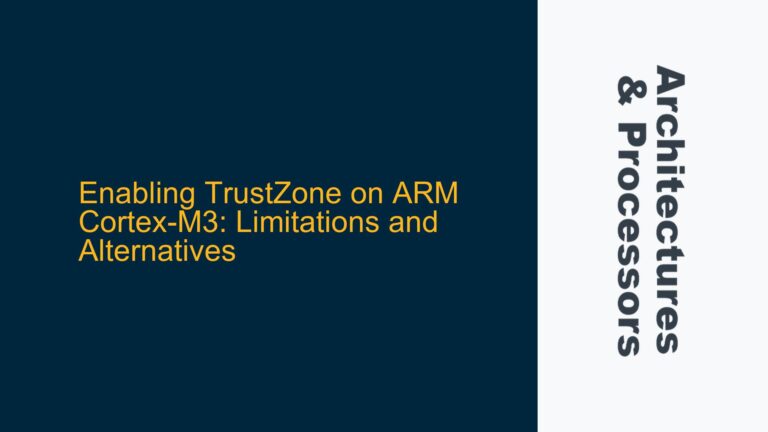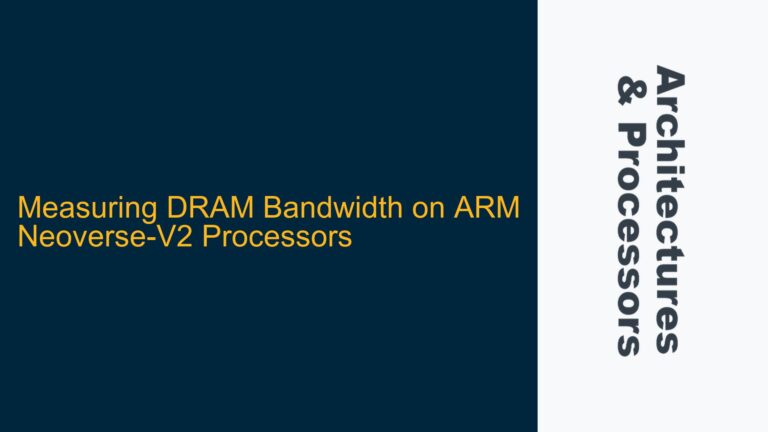ARM Exception Handling: Synchronous Exceptions and Stack Pointer Selection
In ARM architectures, particularly in ARMv8 and later, exception handling is a critical aspect of system design and debugging. A synchronous exception is one that occurs as a direct result of the execution of an instruction, such as an undefined instruction, a memory access fault, or a division by zero. These exceptions are distinct from asynchronous exceptions, which are caused by external events like interrupts. When a synchronous exception occurs, the processor must determine which exception level (EL) to handle the exception and which stack pointer (SP) to use during the handling process.
The ARM architecture provides multiple exception levels (EL0 to EL3), each with its own stack pointer (SP_EL0, SP_EL1, SP_EL2, SP_EL3). The choice of stack pointer during an exception is determined by the current exception level and the configuration of the system. The term "Synchronous exception from Current EL with SP_ELx" refers to a scenario where a synchronous exception is taken at the current exception level, and the processor uses the stack pointer associated with that level (SP_ELx) for handling the exception.
However, the ARM architecture also allows for flexibility in stack pointer selection. For example, when executing at EL1, the processor can be configured to use either SP_EL1 or SP_EL0. This flexibility is useful in scenarios where a dedicated stack pointer for a particular exception level is not required, or where the system designer wants to optimize stack usage. The choice of stack pointer is controlled by the SPSel (Stack Pointer Select) register, which can be configured to select either SP_EL0 or SP_ELx for the current exception level.
Understanding the relationship between exception levels, stack pointers, and synchronous exceptions is crucial for debugging and optimizing ARM-based systems. Misconfigurations or misunderstandings in this area can lead to subtle bugs, such as stack corruption, incorrect exception handling, or performance bottlenecks.
Possible Causes of Synchronous Exception Handling Issues
One of the primary causes of issues related to synchronous exceptions and stack pointer usage is the misconfiguration of the SPSel register. If the SPSel register is not set correctly, the processor may use the wrong stack pointer during exception handling, leading to stack corruption or incorrect behavior. For example, if the SPSel register is set to use SP_EL0 at EL1, but the system expects to use SP_EL1, the exception handler may overwrite data that is critical for the correct operation of the system.
Another potential cause of issues is the improper handling of exception entry and exit. When an exception is taken, the processor saves the current state, including the program counter (PC) and processor state (PSTATE), to the stack. If the stack pointer is not correctly configured or if the stack is not properly allocated, the saved state may be corrupted, leading to unpredictable behavior when the exception handler attempts to return to the original execution context.
Additionally, the use of SP_EL0 at higher exception levels (EL1, EL2, EL3) can lead to performance issues or security vulnerabilities. SP_EL0 is typically used for user-mode applications (EL0), and using it at higher exception levels can result in increased stack usage or potential exposure of sensitive data. For example, if an exception handler at EL1 uses SP_EL0, it may inadvertently expose kernel data to user-mode applications, leading to security vulnerabilities.
Finally, the interaction between exception handling and other system components, such as the Memory Management Unit (MMU) or the cache, can also lead to issues. For example, if the MMU is not correctly configured, the exception handler may attempt to access invalid memory addresses, leading to further exceptions or system crashes. Similarly, if the cache is not properly managed, the exception handler may operate on stale data, leading to incorrect behavior.
Troubleshooting Synchronous Exception Handling and Stack Pointer Configuration
To troubleshoot issues related to synchronous exceptions and stack pointer usage, it is essential to first verify the configuration of the SPSel register. The SPSel register should be checked to ensure that it is set to the correct value for the current exception level. For example, if the system is operating at EL1 and expects to use SP_EL1, the SPSel register should be set to 1. If the register is set to 0, the processor will use SP_EL0, which may lead to the issues described earlier.
Next, the exception entry and exit sequences should be carefully reviewed. The exception handler should ensure that the stack is properly allocated and that the saved state is correctly stored and restored. This includes verifying that the stack pointer is correctly aligned and that there is sufficient stack space for the exception handler to operate. Additionally, the exception handler should ensure that any necessary context switches, such as switching between SP_EL0 and SP_ELx, are correctly handled.
The interaction between exception handling and other system components should also be examined. The MMU configuration should be checked to ensure that the exception handler has access to the necessary memory regions. The cache should be managed to ensure that the exception handler operates on up-to-date data. This may involve invalidating or cleaning the cache as necessary.
Finally, the system should be tested under various conditions to ensure that the exception handling and stack pointer configuration are robust. This includes testing with different exception levels, different stack configurations, and different system states. The system should be monitored for any signs of stack corruption, incorrect behavior, or performance issues.
In conclusion, understanding and correctly configuring synchronous exception handling and stack pointer usage is critical for the reliable operation of ARM-based systems. By carefully verifying the SPSel register, reviewing the exception entry and exit sequences, examining the interaction with other system components, and thoroughly testing the system, developers can ensure that their systems handle exceptions correctly and efficiently.
